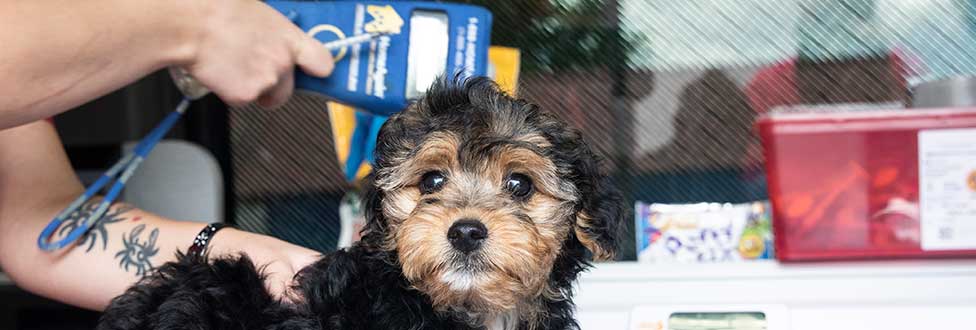August is Microchip Month at Boston Veterinary Care!
Boston Veterinary Care (BVC) answers your Microchip FAQs
Did you know… that microchipping your pet DOUBLES their chances of finding their way home?
August 15 is National Check the Chip Day, and for good reason: During the Summer months, pets will be spending more time outside—or may find themselves extra eager to slip out the door into the sunshine. In the event that you and your pet ever become separated, you’ll want to make sure that you are reunited as quickly and easily as possible.
That’s where a microchip comes in handy! Once microchipped, your pet can be identified throughout its life with a one-of-a-kind ID number. For this reason, microchipping has become extremely popular for pet owners, and scanning pets for microchips has become standard practice in veterinary offices, animal hospitals, and animal shelters.
Q: What is a microchip?
A: A microchip is a tiny computer chip, about the size of a grain of rice, programmed with an identification number that is unique to your pet. It is non-toxic, non-allergenic, and will last the life of your pet with no maintenance required. The microchip is injected with a needle beneath the skin between the shoulder blades and is anchored in place as a thin layer of connective tissue forms around it.
Q: Will the implantation of the microchip cause my pet pain?
A: Your pet may feel a slight “pinch” as they would with any other needle injection. Once the microchip in place, however, it does not cause pain and cannot be felt by touch. Many pet owners opt to microchip their pet during routine exams, spay or neutering, or dental cleanings; it’s one less trip to the vet, and your furry companion will probably be too distracted to notice that the injection is happening.
Q: Can all cats and dogs receive a microchip, and at what age?
A: Absolutely! A microchip is recommended for all cats and dogs (even toy breeds) and can be implanted as early as 6-8 weeks of age.
Q: How does microchip identification work?
A: A special non-intrusive scanner is used to send a signal to the microchip to read the identification number. The person reading the scanner can search a national microchip registry to find out the pet owner’s information.
Q: Why should I microchip my pet; isn’t a collar enough?
A: In short, things happen. While a collar with ID tags is an excellent start, there is always a chance that they can be removed or fall off. Think of a microchip as a permanent ID tag for your pet—and a fail-safe way to verify that you’re their owner.
Microchips have reunited thousands of pets with their owners, even ones who have been missing for years or traveled many miles away! If your pet were to go astray, any veterinarian’s office, animal hospital, or animal shelter would be able to scan your pet’s microchip and contact you immediately. Be sure to keep your contact information current in the national microchip registry database to ensure an easy reunion with your pet – some microchip companies even let you add a backup contact.
Q: My microchipped pet is missing. What do I do?
A: The first step is to contact your pet’s microchip manufacturer (e.g, PetLink, Home Again) and provide them with your pet’s unique microchip number. If your pet has already been located, they’ll be able to tell you where to pick up your pet. If your pet’s whereabouts have not yet been located, it means that their microchip has not yet been scanned by a local animal shelter, animal hospital, or veterinarian. The microchip manufacturer will put an alert in the system so that when your pet’s microchip IS scanned they can contact you right away.


